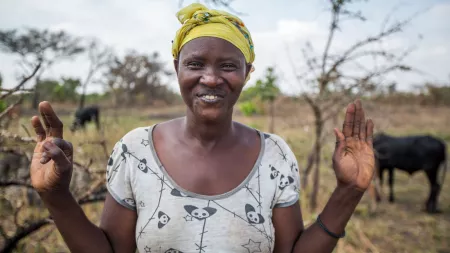By September of 2022, the global food crisis had gotten so extreme that 205.1 million people urgently needed humanitarian food assistance just to survive. Tragically, if we do nothing to invest in long-term food systems, the crisis could worsen fourfold in just 6 months. That means that is the crisis we can still avert. Investing in food production, increasing resilience, gender equality, and functioning markets can stave off this crisis if we act fast.
CARE can’t do it alone though—we are just one part of the solution. Our work, our partners, and the people we serve provide so much hope and assure us that this is a problem the world can solve if we get it right.
Why are we so sure? Because our evidence—and this year’s annual report on the Right to Food, Water, and Nutrition—provide so many examples of change that works and lasts when you invest in people, communities, and systems that work. World Food Day is a great opportunity to reflect on how change can happen.
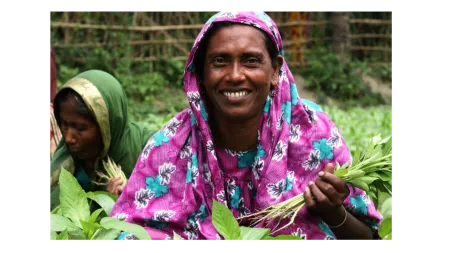
Here’s just one example:
Mst. Rokeya Begum from Bangladesh is working with her husband to run a business selling banana stems and leaves to feed cows. “It has been a struggle to attain the community's confidence that the feed will not harm their cattle; it is available for a lower cost and can be stored for a long time.” But Rokeya and her husband persevered, and they’ve earned a profit of $73 after paying back their investment of $126. They used their training to create a business that improves food security, costs less money, generates less waste, and is better for the environment. With the tools, training, and support they need, they are changing their own community.
In 2021, CARE had 795 projects in its portfolio on the Right to Food, Water and Nutrition, directly reaching 33.9 million people, 53% of which were women and girls.
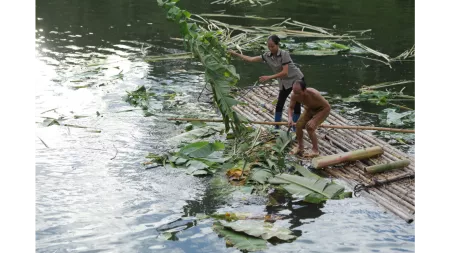
What’s changing?
- People have more food. In 2021, CARE assisted 2,437,157 people increase their access to food, water, and nutrition. Since 2015, 22.6 million people CARE works with have increased their food security, nutrition, or sustainable agriculture.
- Young people are more involved in food systems. 49% Of CARE’s FWS programs work directly with teenagers and young people—both as farmers, and as people who build businesses to support farmers, from selling fertilizers to interpreting and sharing weather data, to running bakeries and other food businesses.
- Markets work for more people. In Central America, the PROSPER 2 program helped microenterprises earn more than $2.1 million in income—with profits of over $1.1 million.
In Mali, Sugu Yiriwa has linked more than 15,000 people to digital business opportunities with SimAgri, and helped get $3.6 million worth of commodities into the hands of smallholder farmers.
In Uganda, 90% of women increased their access to markets (3 times better than 30% when the project started), and producer groups sold more than 602 metric tons of corn and beans. - People have better nutrition, especially in crisis. In Malawi’s Titukulane project, more than 15,835 women used cash transfers to get better food for themselves and their children and improve nutrition.
- Water is more sustainable. In Latin America, CARE Ecuador (ACCRE) and CARE Peru (Glaciares+ and GOA) build activities around understanding the landscapes, land and water uses. Users in an area use adaptation and mitigation to protect and conserve water resources, link conservation financing mechanisms with productive activities through water funds, and use public policy and advocacy to institutionalize and finance successful models. Since 2015, 10.2 million people gained access to clean water or sanitation.
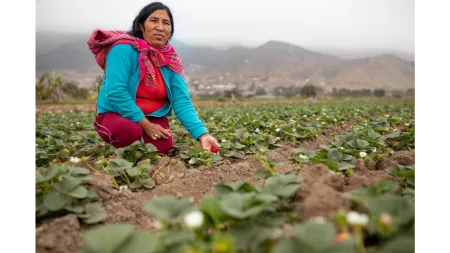
How is it happening?
- Support gender equality. In FY21, 86% of CARE’s programming in food was working with gender equality, and 82% of the programs engaged men and boys. In Burundi, supporting gender equality in agriculture programs gave a $5 return for every $1 invested, compared to $2 for every $1 for programs that didn’t focus on gender.
- Invest in long-term systems. Food systems that work for more people, especially women, are still paying off years after CARE stopped investing. In Bangladesh, people doubled their incomes after the project closed.
- Act fast in a crisis. CARE is working to respond to the global food crisis with humanitarian aid for people who need it immediately. With support through resources and community trainings on growing and marketing more food now. CARE's responses are approached with the aim to change broader food systems to make sure everyone can eat.
- Advocate for change. CARE is a core partner in the UN Food Systems Summit, co-leading on the track around advancing equitable livelihoods. We’re also core partners in the global and national movements on Scaling Up Nutrition.
- Partner with others. 80% of CARE’s Food and Water Systems programs work with women’s rights and/or women-led organizations. 98% of projects work with partners, and 71% of projects co-defined the relationship and project priorities with those partners.
- Acknowledge and support women’s leadership. Women in Uganda transformed food distribution. The Yoleta Women’s Group organized a sit-down strike at the food distribution point, boycotting food distribution. They got men who support women’s rights to write a memo to UNHCR explaining why they were on strike. Now, UNHCR, WFP, and others deliver food directly to communities, and women don’t have to walk. Better yet, everyone in the community sees women as leaders who get things done, and gets them involved in humanitarian decisions. Women Respond provides a key platform to lift up and listen to women’s voices—in food and in many other areas that women care about.
Want to learn more?
Check out the annual report. For a broader overview of the FWS FY21 programming, check out this mapping of our programs by region!
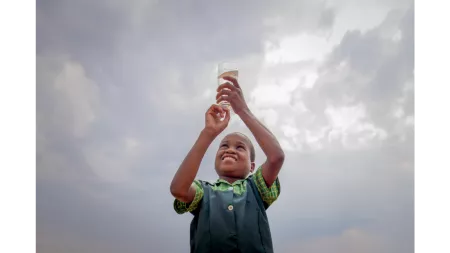
In helping to address the global water, food, and nutrition crisis, CARE's aim is that by 2030, 75 million people will better exercise their right to adequate food, water and nutrition. We aim to support 25 million people, at least 55% of whom are women, to produce more healthy food, have better access to water and sanitation, and improve their nutrition. This will include women small-scale food producers, women and girls living in water scarcity or water stressed areas, as well as refugees and internally displaced people.
Read more